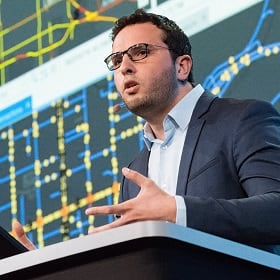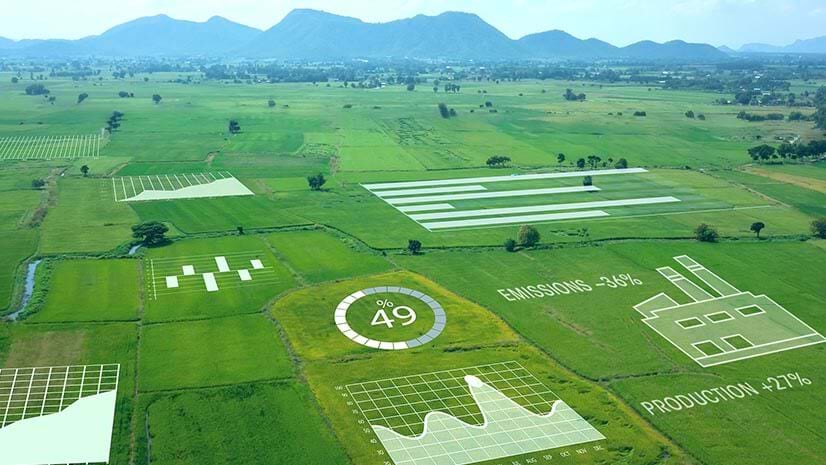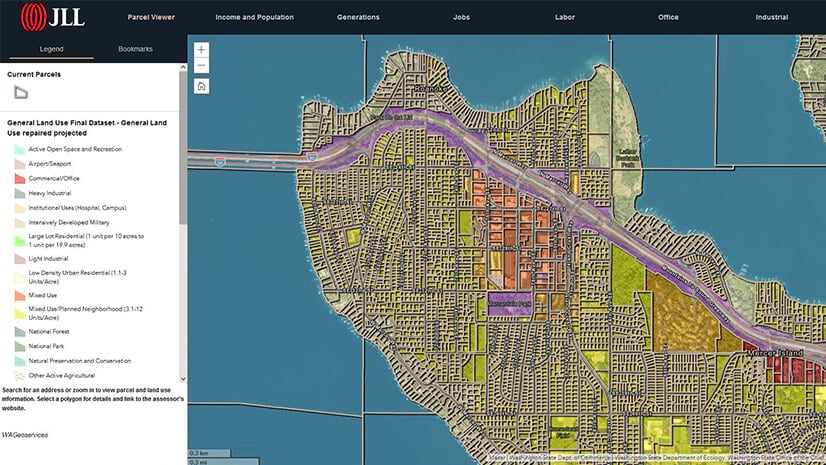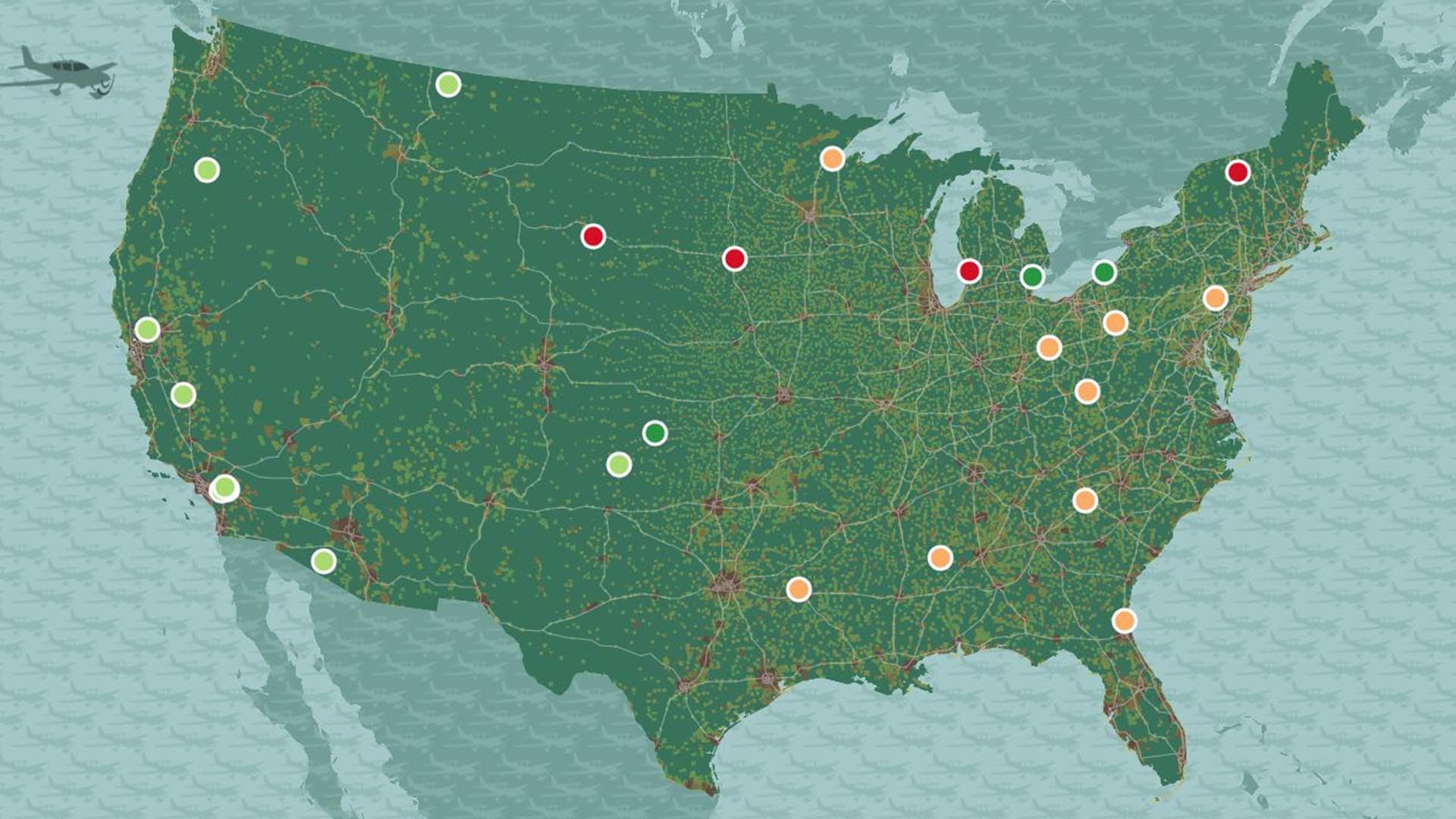Business trend prediction can be notoriously difficult, but corporate leaders who pay close attention see signs of what’s to come. Here, we asked thought leaders to weigh in on the future of business and the role location intelligence will play in tomorrow’s shifts, from urbanization to AI-based automation, climate change to customer power.

Climate Change Stokes Business Change
Climate change isn’t just on the horizon, it’s affecting us today. And companies need to know how to deal with the changes it brings. The connection between climate change and ESG—environmental, social, and governance risk—will likely be the next major location-based challenge we’ll encounter here at Regions.
Our ability to quantify the risks of climate change—and tell a visual story about how the company is reducing and mitigating those risks—will be a major asset, especially as boards and shareholders become increasingly vocal about expectations for ESG.
Broadly speaking, location intelligence is becoming ingrained in our daily customer centric culture at Regions. Our understanding of consumer habits and patterns will continue to inform how we put our customers first. Location will play a role in everything we do for our customers, from how we market our products and services to how we respond to environmental, social, and governance risk.

Customers Set the Agenda
In recent years, customers have come to understand their own deep influence over companies’ strategic agendas. In the years to come, businesses that make customer experience (CX) a top priority will thrive. Influential executives are taking a holistic view of how customers interact with their brand—understanding that it encompasses every type of engagement including marketing, point-of-sale, service, and support.
To better understand customers, industry innovators will leverage new, anonymized data on consumer behavior. And since the vast majority of that data will be tied to specific locations, savvy executives will use location technology to analyze and understand customer preferences. The most influential CX trend in the next few years will be a focus on what customers want and where they want it.

Predictions Improve
If we want to predict the future of business, we should focus on the future of prediction. Every company wants to know what’s ahead, adjust accordingly, and get an edge on the competition. The shrewd ones will take full advantage of predictive artificial intelligence applications, including machine learning and deep learning. This represents the next stage of digital transformation for many companies.
We’ve seen executives across industries embrace AI as a way to understand the state of their operations. In some cases that means analyzing call center logs to identify which service complaints are common in which locations. In others, it’s using AI to perform image analysis on competitor locations or far-flung company assets. And they’re not just doing it once; they’re automating the process, scaling the operations, and letting the model learn and improve future predictions.
What only a select group of executives grasp—but more soon will—is AI’s ability to analyze this and other data to see what the future holds for a business. One of the most compelling business cases in the next few years will involve predicting how much revenue a new store will generate in a specific location. This convergence of AI and location intelligence will help bricks-and-sticks companies and digital upstarts plan growth strategies more precisely, and minimize risk in the process.

Demand Grows for Sustainable Choices
As sustainability becomes a mainstream concern, interest in electric vehicles will grow. Businesses with a role in filling that demand will create ways to serve new and existing customers.
At Austin Energy, we are working to identify underserved populations for electric vehicle charging stations powered by renewable energy—including low- to moderate-income communities and areas without adequate access to them. Once we identify those areas, we will customize our programs and outreach to those residents by using location-specific demographics and other data.
We will also enhance our demand response programs by analyzing vehicle telematics to better understand the demand for electric vehicle charging. And we will prioritize charging station maintenance and station upgrades based on location and usage analytics.

Adapting to Urban Growth
Increasing urbanization will play a substantial role in shaping business strategy. More than half of the world’s population lives in urban areas, and in just three decades that proportion will reach nearly 70 percent. In raw numbers, that’s an additional 2.5 billion people calling cities their home—and nearly 90 percent of this growth will be in Asia and Africa.
We already see smart companies anticipating this trend. Nike, for example, has said that over the coming years, 12 cities—all but two outside the US—will account for 80 percent of the company’s growth.
To understand and leverage this demographic shift, businesses will use location intelligence to tailor strategies for specific cities. For example, rather than a US business plan or even a Southwest regional plan, they’ll adopt a Dallas strategy or an Amsterdam strategy. This kind of local planning will require a detailed understanding of how consumer preferences vary from city to city.
Those same businesses are also facing pressure to compete with Amazon and the “right now” economy and stay mindful of their environmental impact. This means they’ll have to figure out how to get products and services to their customers today—or even within the hour—with fewer emissions. Location intelligence will help companies address these tactical problems and inform larger strategies for an urbanizing world.

Automating Business with AI
If we’re predicting the future of business operations and strategy, two terms come to mind: artificial intelligence and automation. Advances in machine learning and deep learning are making it possible for AI to process thousands of variables to make predictions, as well as extract insights from complex data such as imagery, video, and text. And all these processes can be automated.
What companies will discover is that automation, combined with location intelligence, can provide unprecedented levels of insight. For instance, by leveraging the exploding amount of human movement data available, businesses can understand the character of cities and neighborhoods with new levels of specificity. They can then use that knowledge, along with thousands of variables, to make accurate predictions regarding the best areas to open stores, craft effective marketing campaigns, and even choose the optimal product assortment or promotions for a given area.
Automation will also simplify the analysis companies routinely perform—and help them scale that insight quickly. One utility company that used a location-based AI model to analyze lidar data, as well as automate asset detection and extraction, saved 50,000 hours annually. Oil and gas companies, fast-casual restaurants, agricultural firms, and others are beginning to understand their competition by automating AI-based programs that sift through thousands of satellite images of specific facilities and locations. These pioneers will achieve and enjoy a competitive edge for years to come.











